Mechanical Properties and Mechanism Analysis of Graphite Tailings Environment-Friendly Concrete
Abstract
1. Introduction
2. Experimental Programs
2.1. Materials
2.1.1. Cement
2.1.2. Silica Fume
2.1.3. Aggregate
2.1.4. Admixture
2.2. Feasibility Analysis of Replacing Sand with GT
2.2.1. Physical Property Analysis
2.2.2. Chemical Composition Analysis
2.2.3. Particle Size Analysis
2.2.4. Comparison of GT and Sand Mesoscopic Pictures
2.3. Test Mix Ratio
2.4. Concrete Preparation Process
- (a)
- Pour GT and sand into the mixing pot and stir at a low speed for 3 min (the aggregates of different particle sizes were filled with each other, and finally mixed evenly).
- (b)
- Pour the cement and silica fume into the mixing pot and stir at a low speed for 3 min (the aggregate was further filled with cementitious material, and the fully mixed raw materials contributed to the hydration reaction).
- (c)
- Pour the pre-mixed water–admixture mixture into the stirring pot and stir at a low speed for 2 min, then stir at a high speed for 3 min (hydration and pozzolanic reactions are carried out in the stirring pot).
- (d)
- Pour the concrete slurry into molds of 70.7 mm × 70.7 mm × 70.7 mm and 40 mm × 40 mm × 160 mm, and then put the molds on the vibrating table to vibrate for 7 min (the escape of air bubbles from the concrete increases the density of the concrete).
- (e)
- Place the vibrated concrete slurry in the environment of ambient temperature 20 ± 1 °C and relative humidity of 60% for 24 h (create a good curing environment for the concrete).
- (f)
- Demold the formed concrete and perform standard curing in a curing room at 20 ± 2 °C and a relative humidity of ≥95%, the specimens are cured for 3, 7, and 28 days (concrete hardening molding).
2.5. Test Methods
2.5.1. Compressive Strength Test
2.5.2. Flexural Test
3. Results and Discussion
3.1. Test Phenomenon
3.1.1. Compression Test Phenomenon
- (I)
- Compression stage of cracks and pores. The concrete was strengthened, and its corresponding microstructure changed. Some pores and cracks perpendicular to the force direction were compacted, and the concrete matrix was elastically compressed and more compact (Figure 6a).
- (II)
- Crack initiation stage. The tip of the contact between the aggregate and cement stone, the micro-cracks within the concrete, and the places with pores within the concrete were prone to stress concentration under the application of load. Moreover, a part of the original cracks within the concrete began to extend or propagate, although they were all short and small in width. As the above microscopic cracks were extended or propagated, the stress concentration was relieved, and the equilibrium was restored immediately. The stress–strain was basically close to the linear elastic relationship at this stage (Figure 6b).
- (III)
- Crack propagation stage. First, the existing cracks were further extended or propagated. Some cracks penetrated the mortar, some short cracks were connected to each other to form long cracks, and new cracks were generated at the same time. Subsequently, the number of continuous penetrations of the cracks increased sharply, and the crack development was accelerated. Lastly, the concrete was penetrated by cracks, and damage occurred (Figure 6c).
3.1.2. Flexural Test Phenomenon
- (I)
- Reinforcement stage. The load–displacement curve was concave at this stage, the pores and some micro-cracks within the concrete were compacted, and the stiffness of the specimen in the flexural section increased (Figure 7a).
- (II)
- Destruction stage. The load–displacement curve of the specimen showed linear elastic development at this stage, the force applied to the concrete led to new cracks, and the rapid propagation of the cracks caused brittle failure of the specimen (Figure 7b).
3.2. Mechanical Property Analysis
3.2.1. Analysis of Compression Test Results
- I.
- Strength analysis
- II.
- Stress strain analysis
3.2.2. Analysis of Flexural Test Results
- I.
- Flexural strength and load–displacement curve analysis
- II.
- Stress strain and energy analysis
3.2.3. Environment-Friendly Evaluation of GT Concrete from a Mechanical Point of View
3.3. Macroscopic and Mesoscopic Analysis of GT Concrete
3.3.1. Analysis of Macroscopic Cracks and Spalling Degree
3.3.2. Mesoscopic Appearance Analysis
3.3.3. Environment-Friendly Evaluation of GT Concrete from the Destructive Form
3.4. Mechanism Analysis of GT Replacing Sand
3.4.1. Analysis of Aggregate Wetting Mechanism
3.4.2. Mechanism Analysis of Concrete Mixing and Vibration
3.4.3. Analysis of Reaction Mechanism of Cementitious Materials
3.4.4. Aggregate–Cementitious Matrix Interface Mechanism Analysis
3.4.5. Environment-Friendly Evaluation on the Mechanism of GT Replacing Sand
4. Conclusions
- (1)
- In general, GT and sand have similar chemical compositions, which lays a basis for GT to replace sand. Nevertheless, the differences in water absorption, crush value, and roughness make GT and sand have different mechanisms.
- (2)
- There is a threshold for the effect of GT content on the mechanical strength of concrete. Compared to GT00, the compressive strength and elastic modulus of GT30 increased by 12.68% and 96.42%, respectively, and the compressive strength and elastic modulus of GT100 decreased by 5.37% and 25.96%, respectively. The filling effect of GT on sand can inhibit the propagation of cracks and increase the energy required for concrete failure. A rate of 30% is recommended as the optimal GT replacement rate.
- (3)
- There are significant differences in concrete spalling degree (GT00~GT100). GT30 and GT40 have the lowest spalling degree (11.3% and 7.9%), and GT90 and GT100 have the largest spalling degree (51.1% and 54.3%). In the mesoscopic analysis, crushed aggregates are observed in the damaged specimens of GT20, GT30, and GT40, obvious defects were identified at the aggregate–matrix interface in GT80 and GT90, and numerous pores were observed in GT100. The above results suggest that the incorporation of an appropriate amount of GT can increase the bonding ability at the interface, and the skeleton effect of GT is significantly reduced when GT achieve the maximum value of 100%.
- (4)
- The characteristics of high water absorption, unreasonable particle size distribution, and large crushing value limit the feasibility of GT completely replacing sand. However, the wetting angle of GT is smaller, which is a good phenomenon for the bonding of GT to the matrix. There are still many places worth studying to increase the amount of GT.
Author Contributions
Funding
Institutional Review Board Statement
Informed Consent Statement
Data Availability Statement
Conflicts of Interest
References
- Jike, N.; Xu, C.; Yang, R.; Qi, Y.; Dai, Y.; Peng, Y.; Wang, J.; Zhang, M.; Zeng, Q. Pervious concrete with secondarily recycled low-quality brick-concrete demolition residue: Engineering performances, multi-scale/phase structure and sustainability. J. Clean. Prod. 2022, 341, 130929. [Google Scholar] [CrossRef]
- Luo, D.; Lu, T.; Chen, Y.F. Application of ultra-high-performance concrete in prefabricated buildings. Mater. Test. 2021, 63, 1174–1183. [Google Scholar] [CrossRef]
- Maruthupandian, S.; Chaliasou, A.; Kanellopoulos, A. Recycling mine tailings as precursors for cementitious binders—Methods, challenges and future outlook. Constr. Build. Mater. 2021, 312, 125333. [Google Scholar] [CrossRef]
- Xu, X.; Xu, P.; Zhu, J.; Li, H.; Xiong, Z. Bamboo construction materials: Carbon storage and potential to reduce associated CO2 emissions. Sci. Total Environ. 2022, 814, 152697. [Google Scholar] [CrossRef] [PubMed]
- Wang, X.Y. Optimal Design of low-carbon concrete containing fly ash and limestone powder. Ceram. Silikaty 2022, 66, 202–210. [Google Scholar] [CrossRef]
- Wu, H.; Xu, J.; Yang, D.; Ma, Z. Utilizing thermal activation treatment to improve the properties of waste cementitious powder and its newmade cementitious materials. J. Clean. Prod. 2021, 322, 129074. [Google Scholar] [CrossRef]
- Adesina, A.; Das, S. Development of low-carbon masonry grout mixtures using alkali-activated binder. Mag. Concr. Res. 2022, 74, 154–161. [Google Scholar] [CrossRef]
- Chen, J.J.; Ng, P.L.; Li, B.H.; Kwan, A.K.H. Concurrent paste replacement and aggregate replacement strategy for producing eco-efficient and low-carbon concrete. Clean Technol. Environ. Policy 2022, 24, 2459–2477. [Google Scholar] [CrossRef]
- Fernandez, C.A.; Correa, M.; Nguyen, M.T.; Rod, K.A.; Dai, G.L.; Cosimbescu, L.; Rousseau, R.; Glezakou, V.A. Progress and challenges in self-healing cementitious materials. J. Mater. Sci. 2021, 56, 201–230. [Google Scholar] [CrossRef]
- Prakash, R.; Thenmozhi, R.; Raman, S.N.; Subramanian, C.; Divyah, N. An investigation of key mechanical and durability properties of coconut shell concrete with partial replacement of fly ash. Struct. Concr. 2020, 22, E985–E996. [Google Scholar] [CrossRef]
- Prakash, R.; Raman, S.N.; Subramanian, C.; Divyah, N. Eco-Friendly Fiber-Reinforced Concretes. In Handbook of Sustainable Concrete and Industrial Waste Management; Woodhead Publishing: Sawston, UK, 2022; pp. 109–145. [Google Scholar]
- DeRousseau, M.A.; Kasprzyk, J.R.; Srubar, W.V., III. Multi-Objective Optimization Methods for Designing Low-Carbon Concrete Mixtures. Front. Mater. 2021, 8, 680895. [Google Scholar] [CrossRef]
- Lee, J.; Lee, T.; Jeong, J.; Jeong, J. Sustainability and performance assessment of binary blended low-carbon concrete using supplementary cementitious materials. J. Clean. Prod. 2021, 280, 124373. [Google Scholar] [CrossRef]
- Atkins, C.; Lambert, P. Sustainability and corrosion. Proc. Inst. Civ. Eng.-Eng.Sustain. 2022, 175, 22–29. [Google Scholar] [CrossRef]
- Hao, L.; Zhang, Z.; Yang, X. Mine tailing extraction indexes and model using remote-sensing images in southeast Hubei Province. Environ. Earth. Sci. 2019, 78, 1–11. [Google Scholar] [CrossRef]
- Sun, L.; Werner, T.; Yang, F.; Xu, W.L.; Tang, L. CO2 fluxes in the chemical weathering of carbonate-hosted tailings ponds, Panxi valley, Sichuan province, China. Environ. Earth. Sci. 2022, 81, 1–13. [Google Scholar] [CrossRef]
- Huang, X.; Ranade, R.; Li, V.C. Feasibility Study of Developing Green ECC Using Iron Ore Tailings Powder as Cement Replacement. J. Mater. Civ. Eng. 2013, 25, 923–931. [Google Scholar] [CrossRef]
- Wu, J.; Tian, K.; Wu, C.; Yu, J.; Wang, H.; Song, J.; Zhang, Q.; Xu, X. Effect of talc on microstructure and properties of the graphite tailing stoneware tiles. Constr. Build. Mater. 2021, 311, 125314. [Google Scholar] [CrossRef]
- Khorasanipour, M.; Karimabadi, F.R.; Espahbodi, M.; Ebrahimnejad, M.R. The effect of flotation desulfurization on the trace element geochemistry of Sarcheshmeh mine tailings, SE of Iran: Recycling and the environmental opportunities. Environ. Earth Sci. 2021, 80, 1–16. [Google Scholar] [CrossRef]
- Jankovic, K.; Susic, N.; Stojanovic, M.; Bojovic, D.; Loncar, L. The influence of tailings and cement type on durability properties of self-compacting concrete. Tehnički Vjesnik 2017, 24, 957–962. [Google Scholar]
- Yong, M.T.; Babla, M.; Karan, S.; Katwal, U.; Jahandari, S.; Matta, P.; Chen, Z.H.; Tao, Z. Coal tailings as a soil conditioner: Evaluation of tailing properties and effect on tomato plants. Plant Growth Regul. 2022, 98, 439–450. [Google Scholar] [CrossRef]
- Gao, S.; Cui, X.; Zhang, S. Utilization of Molybdenum Tailings in Concrete Manufacturing: A Review. Appl. Sci. 2020, 10, 138. [Google Scholar] [CrossRef]
- Gao, S.; Cui, X.; Kang, S.; Ding, Y. Sustainable applications for utilizing molybdenum tailings in concrete. J. Clean. Prod. 2020, 266, 122020. [Google Scholar] [CrossRef]
- Abd Latif, S.; Rahman, M.S.A.; Sikiru, O. Sorptivity of concrete containing iron ore tailings. Rom. J. Mater. 2017, 47, 336–344. [Google Scholar]
- Zhang, Z.; Zhang, Z.; Yin, S.; Yu, L. Utilization of Iron Tailings Sand as an Environmentally Friendly Alternative to Natural River Sand in High-Strength Concrete: Shrinkage Characterization and Mitigation Strategies. Materials 2020, 13, 5614. [Google Scholar] [CrossRef]
- Zhang, Y.; Shen, W.; Wu, M.; Shen, B.; Li, M.; Xu, G.; Zhang, B.; Ding, Q.; Chen, X. Experimental study on the utilization of copper tailing as micronized sand to prepare high performance concrete. Constr. Build Mater. 2020, 244, 118312. [Google Scholar] [CrossRef]
- Li, L.; Wang, J.; Zhang, L.; Deng, R.; Zhou, S.; Wang, G. Strength and Durability Properties of Antimony Tailing Coarse Aggregate (ATCA) Concrete. Materials 2021, 14, 5606. [Google Scholar] [CrossRef]
- Otieno, M.; Ndoro, E. Utilization of kimberlite tailings as aggregates in concrete-strength and selected durability properties. MRS Adv. 2020, 5, 1259–1266. [Google Scholar] [CrossRef]
- GB/T 176-2017; Methods for Chemical Analysis of Cement, China Quality Standard. Publishing and Media Co., Ltd.: Beijing, China, 2017.
- Simonsen, A.M.T.; Solismaa, S.; Hansen, H.K.; Jensen, P.E. Evaluation of mine tailings’ potential as supplementary cementitious materials based on chemical, mineralogical and physical characteristics. Waste Manag. 2020, 102, 710–721. [Google Scholar] [CrossRef]
- JGJ 52-2006; Standard for Technical Requirements and Test Method of Sand and Crushed Stone (or Gravel) for Ordinay Concrete. China Architecture & Building Press: Beijing, China, 2006.
- JC/T 1084-2019; Methods for Chemical Analysis of China ISO Standard Sand. Ministry of Industry and Information Technology of the People’s Republic of China: Beijing, China, 2019.
- Gucluer, K. Investigation of the effects of aggregate textural properties on compressive strength (CS) and ultrasonic pulse velocity (UPV) of concrete. J. Build. Eng. 2020, 27, 100949. [Google Scholar] [CrossRef]
- Piotrowska, E.; Malecot, Y.; Ke, Y. Experimental investigation of the effect of coarse aggregate shape and composition on concrete triaxial behavior. Mech. Mater. 2014, 79, 45–57. [Google Scholar] [CrossRef]
- Hai, Y.; Liao, L.; Lv, G.; Qin, F.; Mei, L.; Wei, Y. Application of Composite Powders Recycled from Graphite Tailings in Styrene-Butadiene Rubber. JOM 2015, 67, 2733–2738. [Google Scholar] [CrossRef]
- Peng, Y.Z.; Liu, Y.J.; Zhan, B.H.; Xu, G. Preparation of autoclaved aerated concrete by using graphite tailings as an alternative silica source. Constr. Build. Mater. 2021, 267, 121792. [Google Scholar] [CrossRef]
- Liu, H.; Li, B.; Xue, J.; Hu, J.; Zhang, J. Mechanical and Electroconductivity Properties of Graphite Tailings Concrete. Adv. Mater. Sci. Eng. 2020, 2020, 20. [Google Scholar] [CrossRef]
- Liu, H.; Liu, K.; Lan, Z.; Zhang, D. Mechanical and Electrical Characteristics of Graphite Tailing Concrete. Adv. Mater. Sci. Eng. 2018, 2018, 9. [Google Scholar] [CrossRef]
- Liu, H.; Xue, J.; Li, B.; Wang, J.; Lv, X.; Zhang, J. Effect of graphite tailings as substitute sand on mechanical properties of concrete. Eur. J. Environ. Civ. Eng. 2020, 26, 2635–2653. [Google Scholar] [CrossRef]
- Liu, H.; Zhang, Y.; Li, B.; Wang, Z. Combined Effects of Graphite Tailings and Curing Conditions on the Early-Age Performances of Cement Mortar. Adv. Civ. Eng. 2020, 2020, 16. [Google Scholar] [CrossRef]
- Wang, Z.R.; Li, B.; Liu, H.B.; Zhang, Y.X.; Qin, X. Degradation characteristics of graphite tailings cement mortar subjected to freeze-thaw cycles. Constr. Build. Mater. 2020, 234, 117422. [Google Scholar] [CrossRef]
- Xue, J.; Wang, X.; Wang, Z.; Xu, S.; Liu, H. Investigations on influencing factors of resistivity measurement for graphite tailings concrete. Cem. Concr. Compos. 2021, 123, 104206. [Google Scholar] [CrossRef]
- Kathirvel, P.; Kwon, S.J.; Lee, H.S.; Karthick, S.; Saraswathy, V. Graphite Ore Tailings as Partial Replacement of Sand in Concrete. ACI Mater. J. 2018, 115, 481–492. [Google Scholar] [CrossRef]
- JGJ/T70-2009; Standard for Test Method of Performance on Building Mortar China. Architecture & Building Press: Beijing, China, 2009.
- GB/T 17671-2021; Test Method of Cement Mortar Strength (IOS Method). Standards Press of China: Beijing, China, 2021.
- Wang, X.Y. Properties prediction of ultra high performance concrete using blended cement hydration model. Constr. Build. Mater. 2014, 64, 1–10. [Google Scholar] [CrossRef]
- Han, F.H.; Li, L.; Song, S.M.; Liu, J.H. Early-age hydration characteristics of composite binder containing iron tailing powder. Powder Technol. 2017, 315, 322–331. [Google Scholar] [CrossRef]
- Ho, J.C.M.; Peng, J. Strain-Gradient-Dependent Stress-Strain Curve for Normal-Strength Concrete. Adv. Struct. Eng. 2013, 16, 1911–1930. [Google Scholar] [CrossRef]
- Peng, J.L.; Du, T.; Zhao, T.S.; Song, X.Q.; Tang, J.J. Stress-Strain Relationship Model of Recycled Concrete Based on Strength and Replacement Rate of Recycled Coarse Aggregate. J. Mater. Civ. Eng. 2019, 31, 04019189. [Google Scholar] [CrossRef]
- Shettima, A.U.; Hussin, M.W.; Ahmad, Y.; Mirza, J. Evaluation of iron ore tailings as replacement for fine aggregate in concrete. Constr. Build. Mater. 2016, 120, 72–79. [Google Scholar] [CrossRef]
- Zhao, J.; Ni, K.; Su, Y.; Shi, Y. An evaluation of iron ore tailings characteristics and iron ore tailings concrete properties. Constr. Build. Mater. 2021, 286, 122968. [Google Scholar] [CrossRef]
- Raheem, A.H.A.; Mahdy, M.; Mashaly, A.A. Mechanical and fracture mechanics properties of ultra-high-performance concrete. Constr. Build. Mater. 2019, 213, 561–566. [Google Scholar] [CrossRef]
- Dong, W.; Zhou, X.M.; Wu, Z.M. A fracture mechanics-based method for prediction of cracking of circular and elliptical concrete rings under restrained shrinkage. Eng. Fract. Mech. 2014, 131, 687–701. [Google Scholar] [CrossRef]
- Farnam, S.M.; Rezaie, F. Simulation of crack propagation in prestressed concrete sleepers by fracture mechanics. Eng. Fail. Anal. 2019, 96, 109–117. [Google Scholar] [CrossRef]
- Hansen, C.S.; Stang, H. Fracture mechanical analysis of strengthened concrete tension members with one crack. Int. J. Fract. 2012, 173, 21–35. [Google Scholar] [CrossRef]
- T/CBMF 37-2018; Fundamental Characteristics and Test Methods of Ultra-Highperformance Concrete. China Building Materials Press: BeiJing, China, 2018.
- Li, W.; Gao, S. Prospective on energy related carbon emissions peak integrating optimized intelligent algorithm with dry process technique application for China’s cement industry. Energy 2018, 165, 33–54. [Google Scholar] [CrossRef]
- Shen, W.; Cao, L.; Li, Q.; Zhang, W.; Wang, G.; Li, C. Quantifying CO2 emissions from China’s cement industry. Renew. Sustain. Energy Rev. 2015, 50, 1004–1012. [Google Scholar] [CrossRef]
- Yan, P.; Mi, G.; Wang, Q. A comparison of early hydration properties of cement-steel slag binder and cement-limestone powder binder. J. Therm. Anal. Calorim. 2014, 115, 193–200. [Google Scholar] [CrossRef]
- Khan, M.I.; Siddique, R. Utilization of silica fume in concrete: Review of durability properties. Resour. Conserv. Recycl. 2011, 57, 30–35. [Google Scholar] [CrossRef]
- Luo, T.; Hua, C.; Sun, Q.; Tang, L.Y.; Yi, Y.; Pan, X.F. Early-Age Hydration Reaction and Strength Formation Mechanism of Solid Waste Silica Fume Modified Concrete. Molecules 2021, 26, 5663. [Google Scholar] [CrossRef] [PubMed]
- Wang, X.M.; Hou, P.K.; Yu, J.H.; Zhou, X.M.; Cheng, X. The effects of silica fume on C3A hydration. Constr. Build. Mater. 2020, 250, 118766. [Google Scholar] [CrossRef]
- Meng, W.; Lunkad, P.; Kumar, A.; Khayat, K. Influence of Silica Fume and Polycarboxylate Ether Dispersant on Hydration Mechanisms of Cement. J. Phys. Chem. C 2016, 120, 26814–26823. [Google Scholar] [CrossRef]
- Liu, J.; Li, Y.; Ouyang, P.; Yang, Y.Q. Hydration of the silica fume-Portland cement binary system at lower temperature. Constr. Build. Mater. 2015, 93, 919–925. [Google Scholar] [CrossRef]
- Song, H.W.; Pack, S.W.; Nam, S.H.; Jang, J.C.; Saraswathy, V. Estimation of the permeability of silica fume cement concrete. Constr. Build. Mater. 2010, 24, 315–321. [Google Scholar] [CrossRef]
- Song, Y.; Guo, C.; Qian, J.; Ding, T. Effect of the Ca-to-Si ratio on the properties of autoclaved aerated concrete containing coal fly ash from circulating fluidized bed combustion boiler. Constr. Build. Mater. 2015, 83, 136–142. [Google Scholar] [CrossRef]
- Zhang, Z.Q.; Zhang, B.; Yan, P.Y. Comparative study of effect of raw and densified silica fume in the paste, mortar and concrete. Constr. Build. Mater. 2016, 105, 82–93. [Google Scholar] [CrossRef]



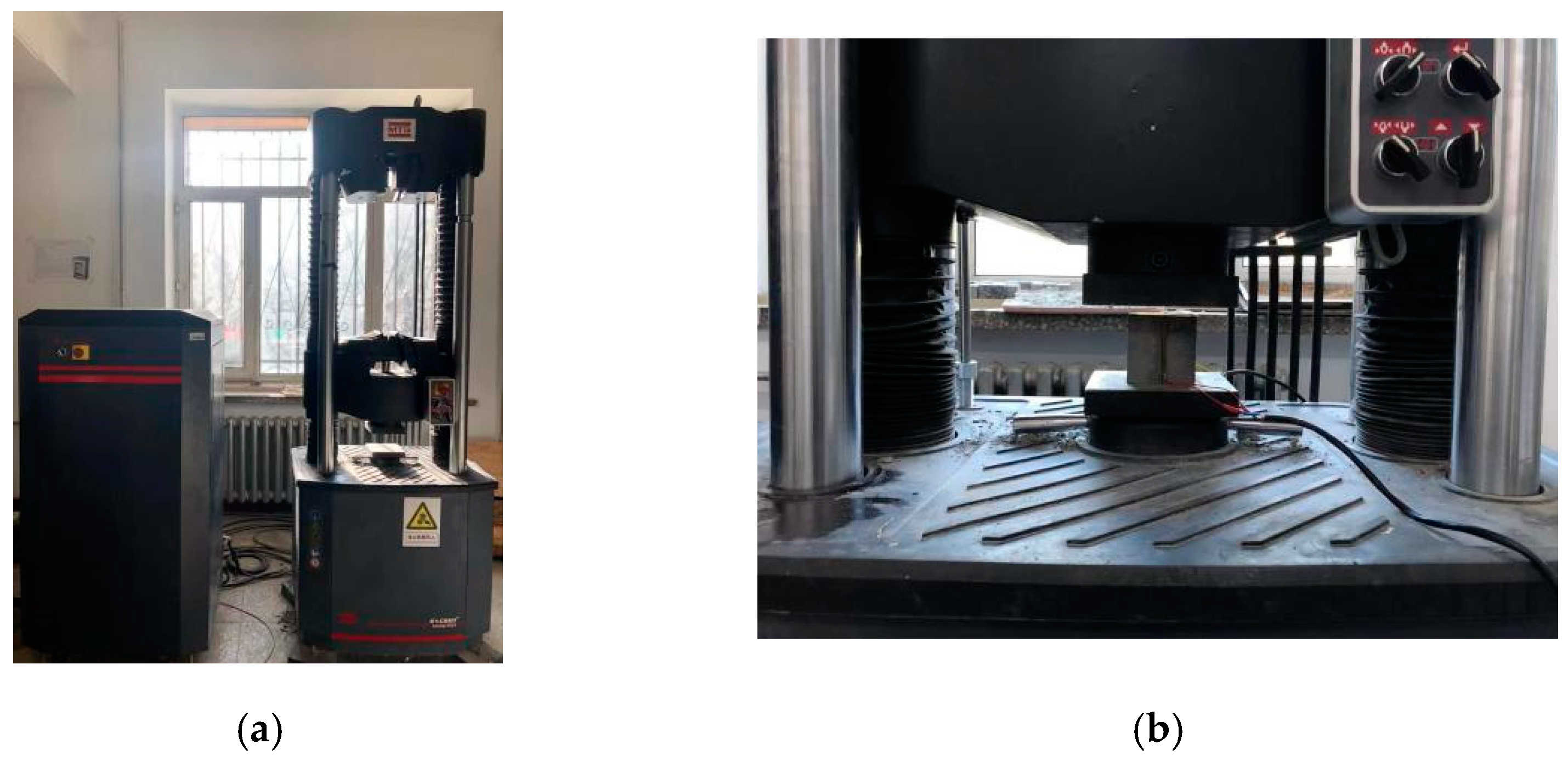
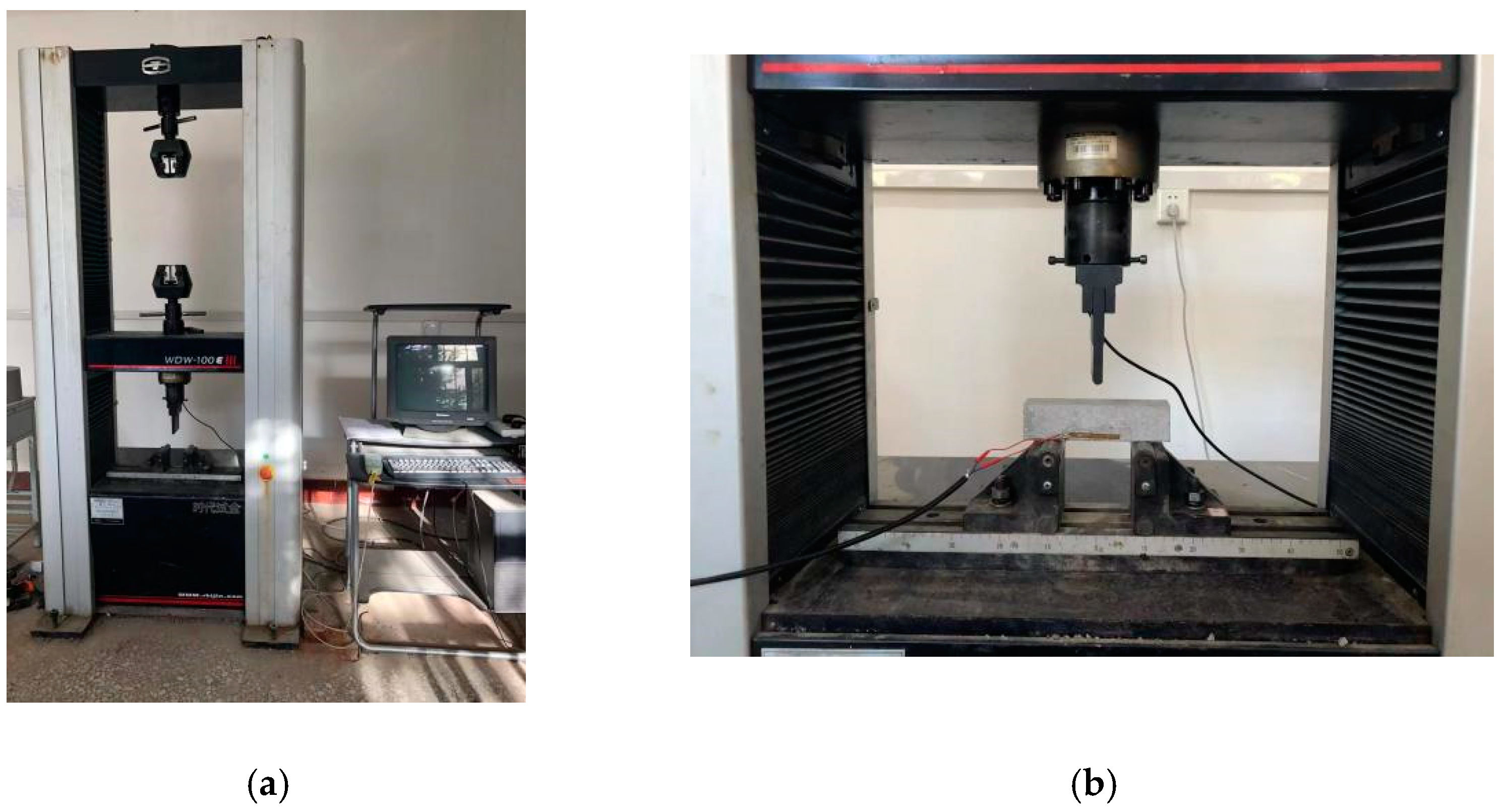



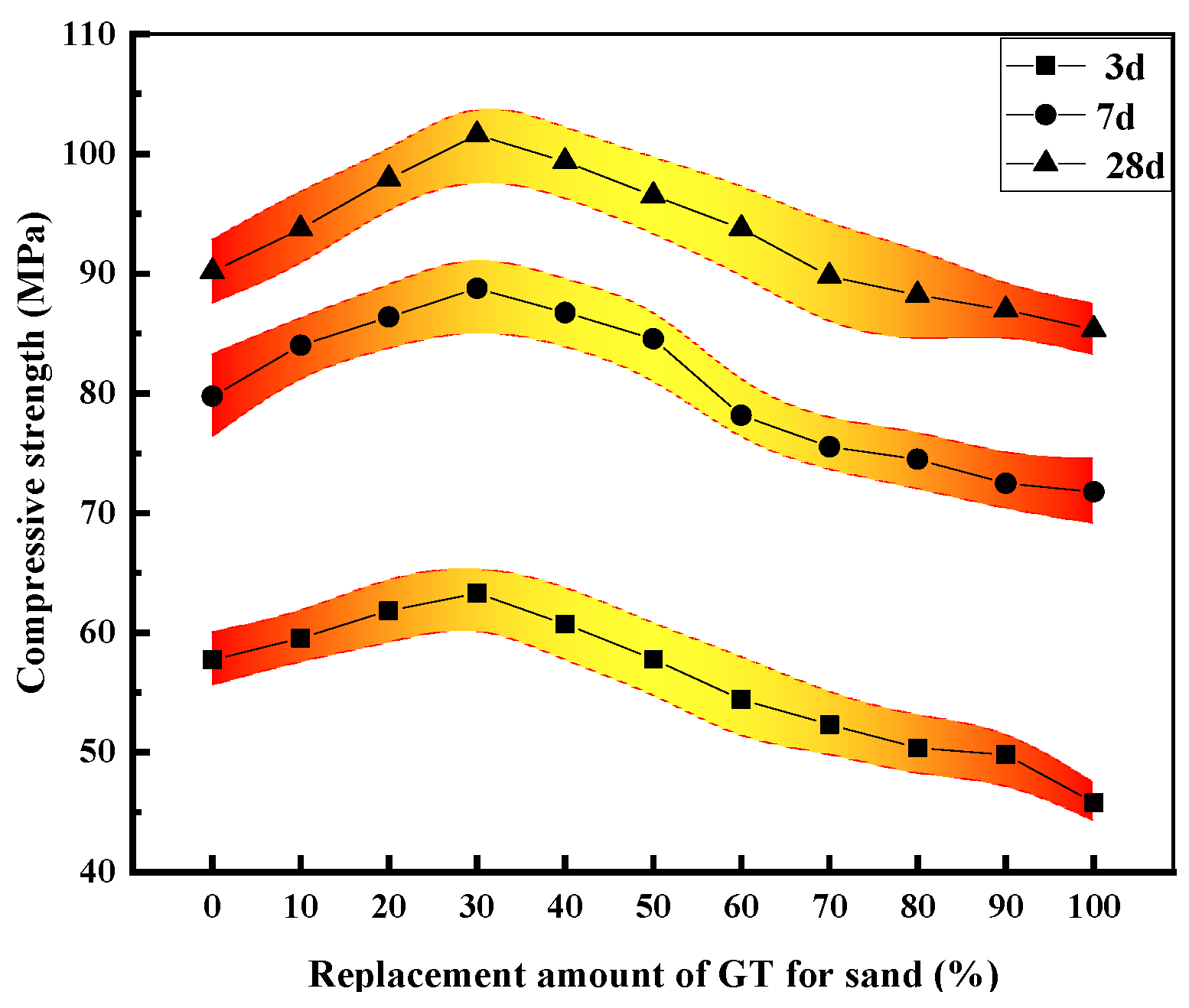
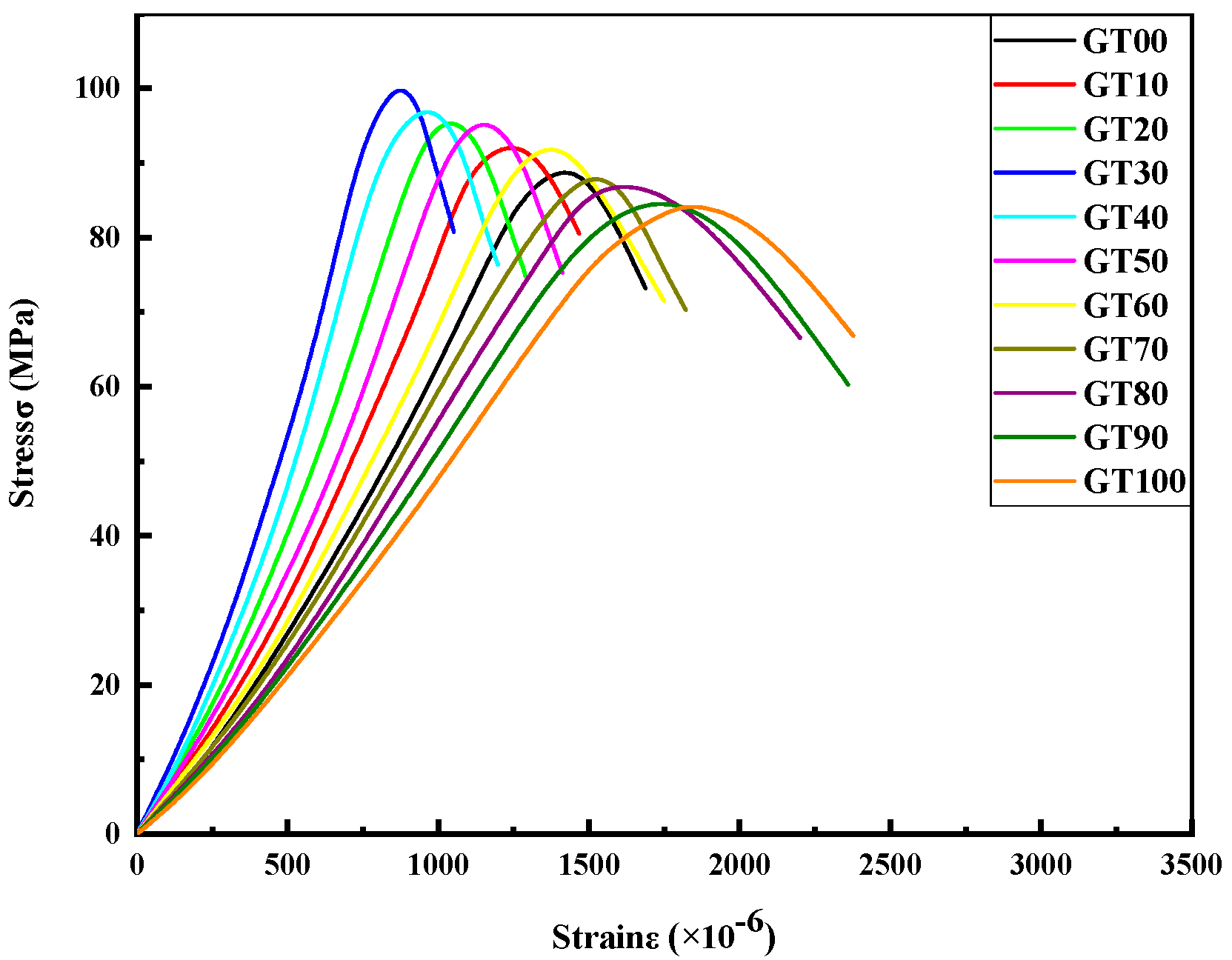

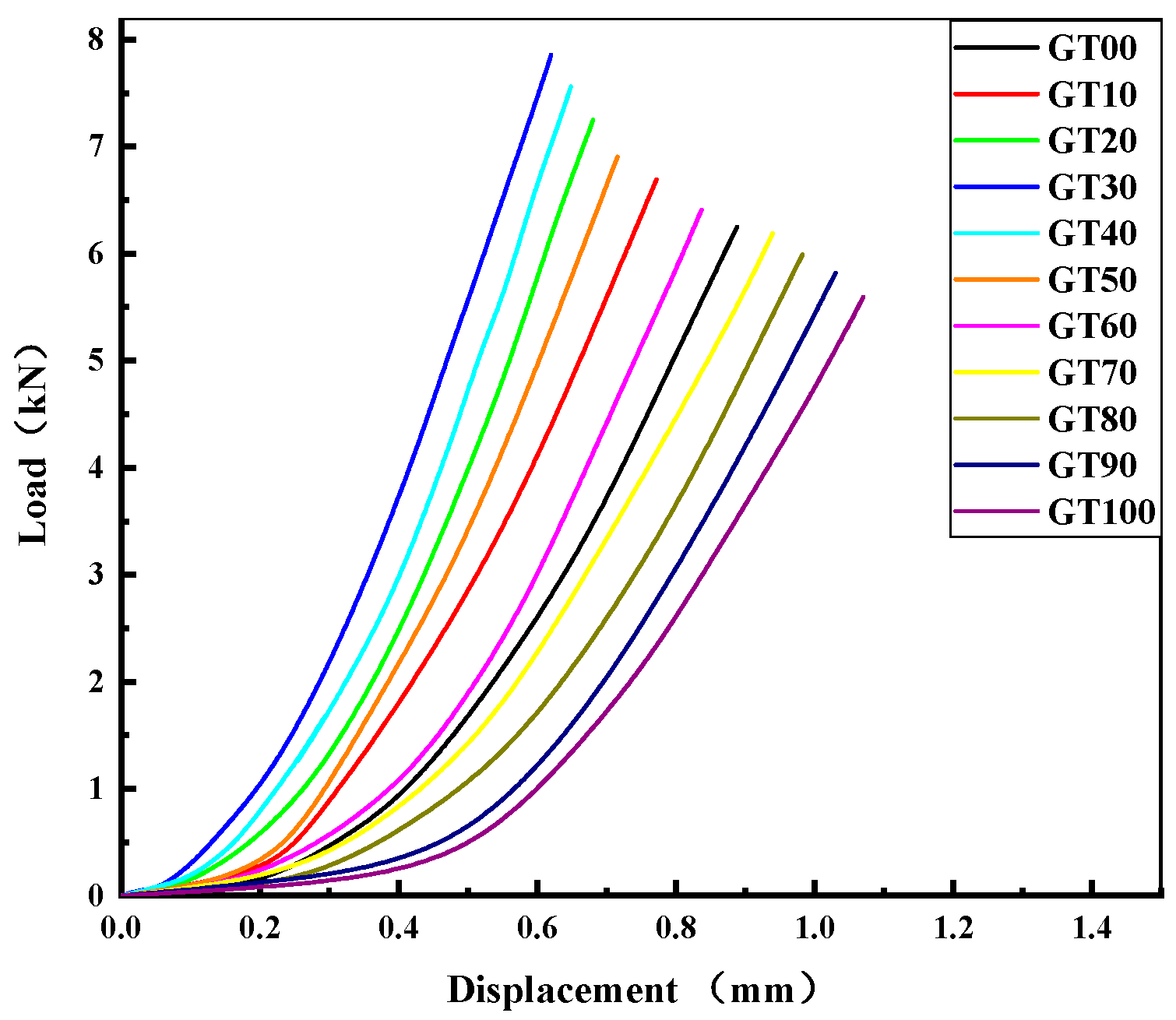
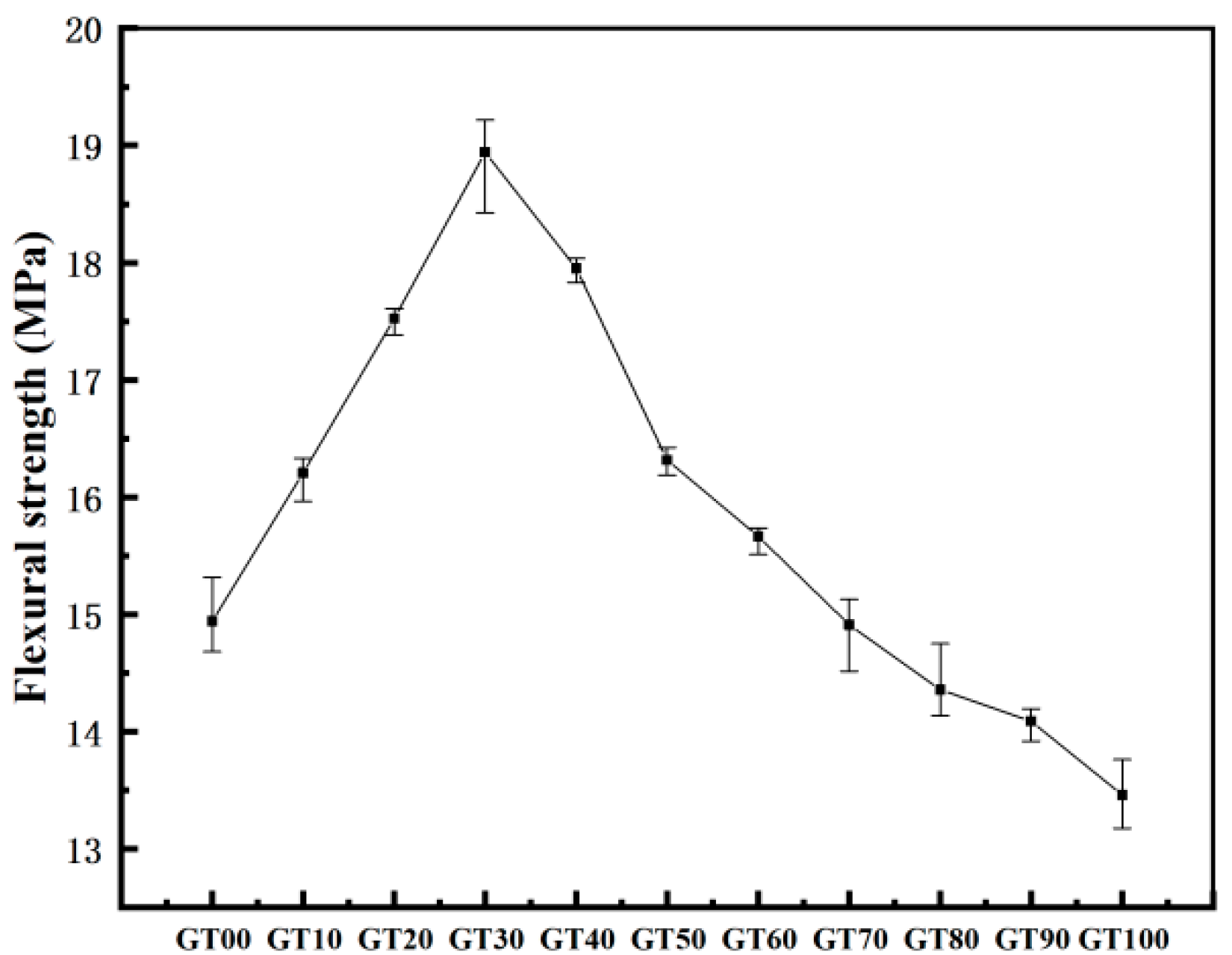
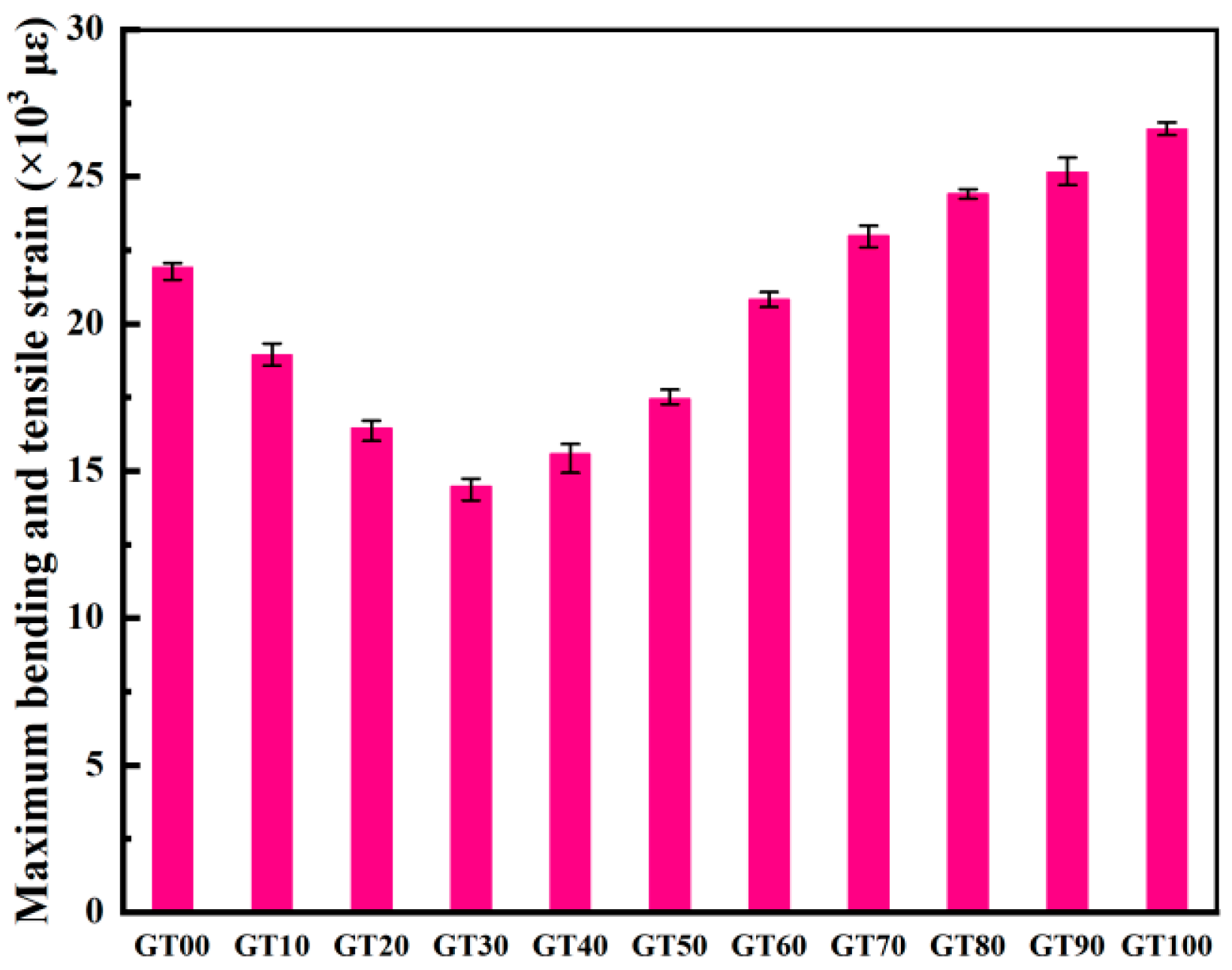
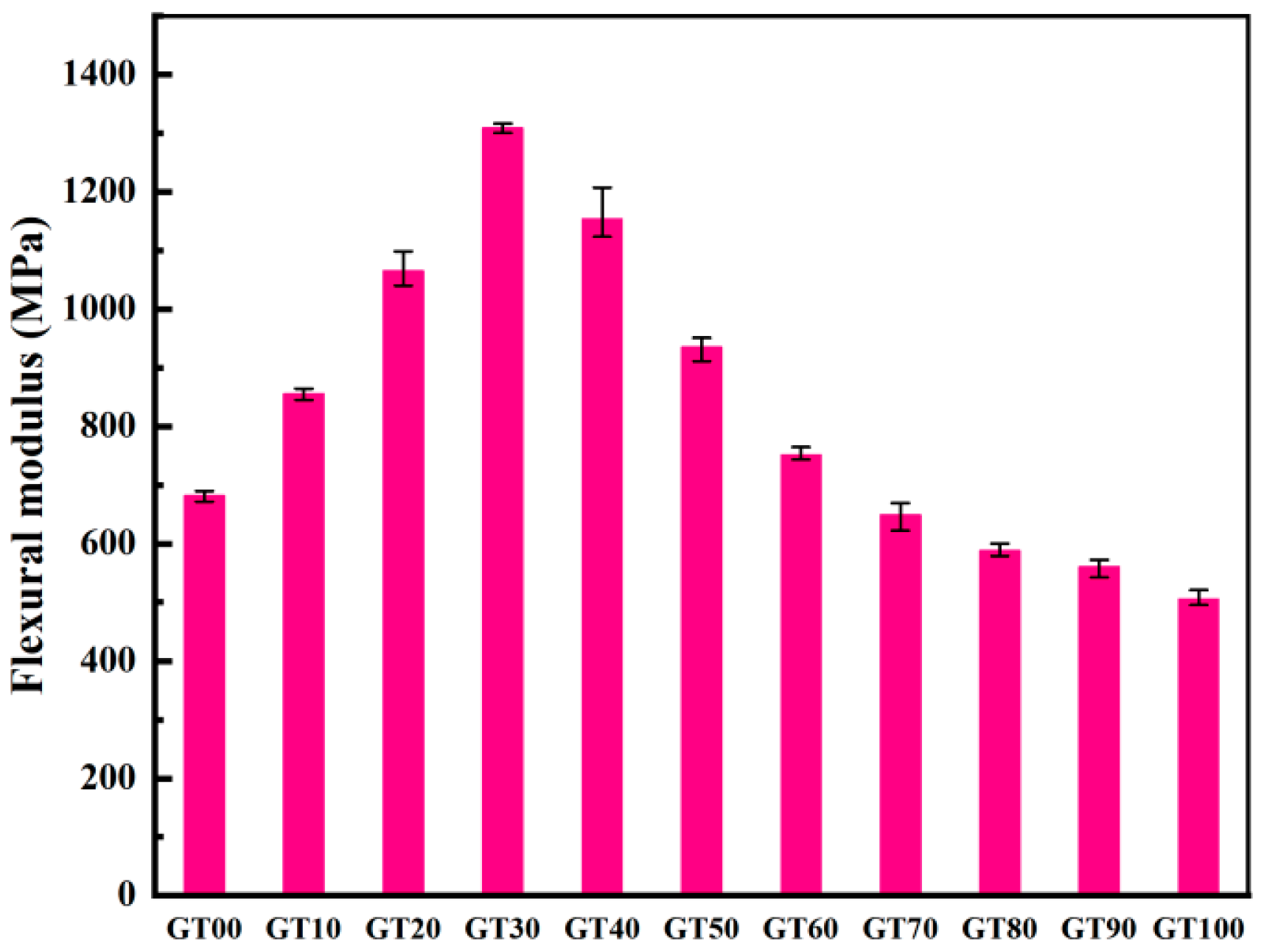


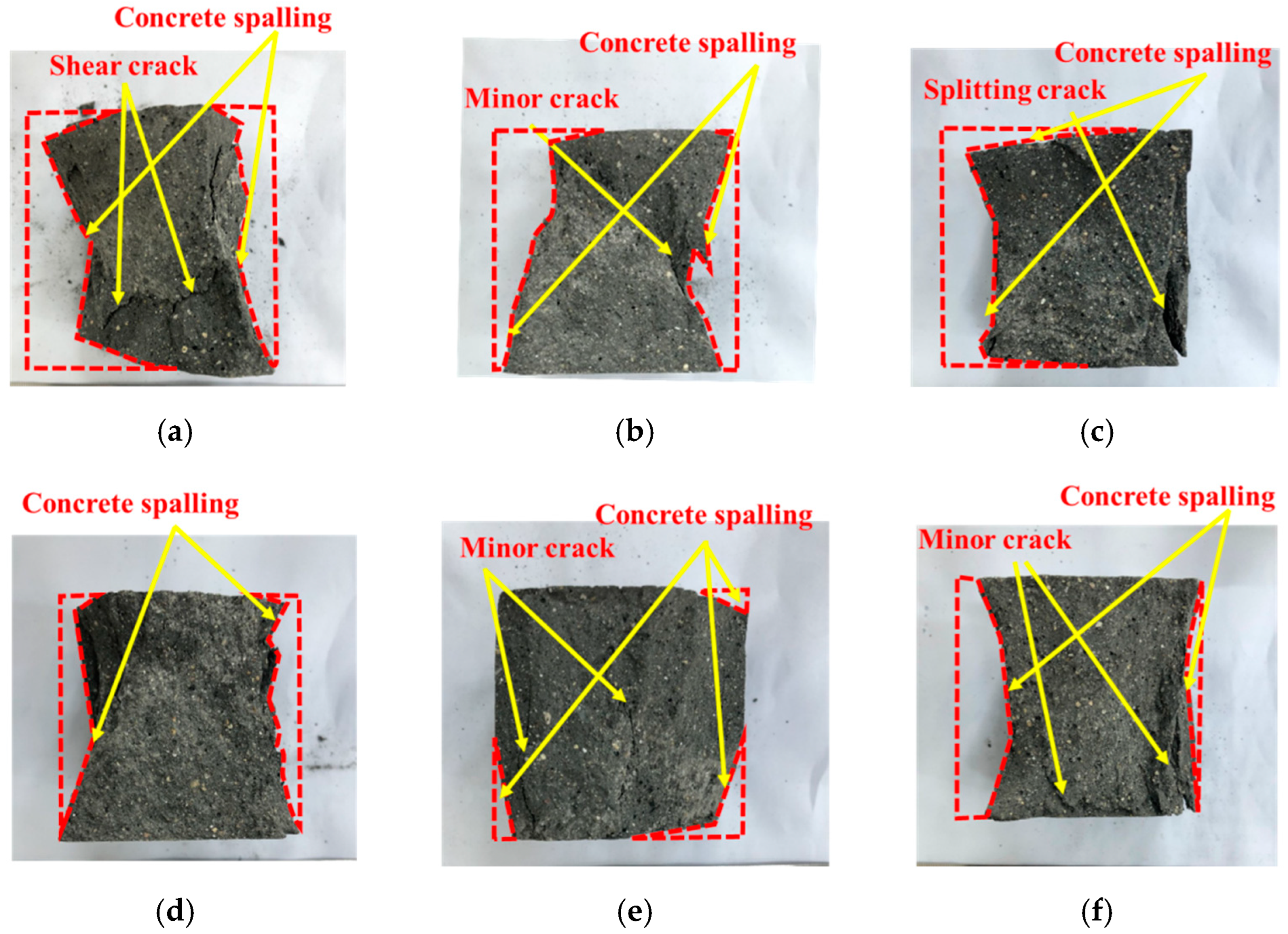
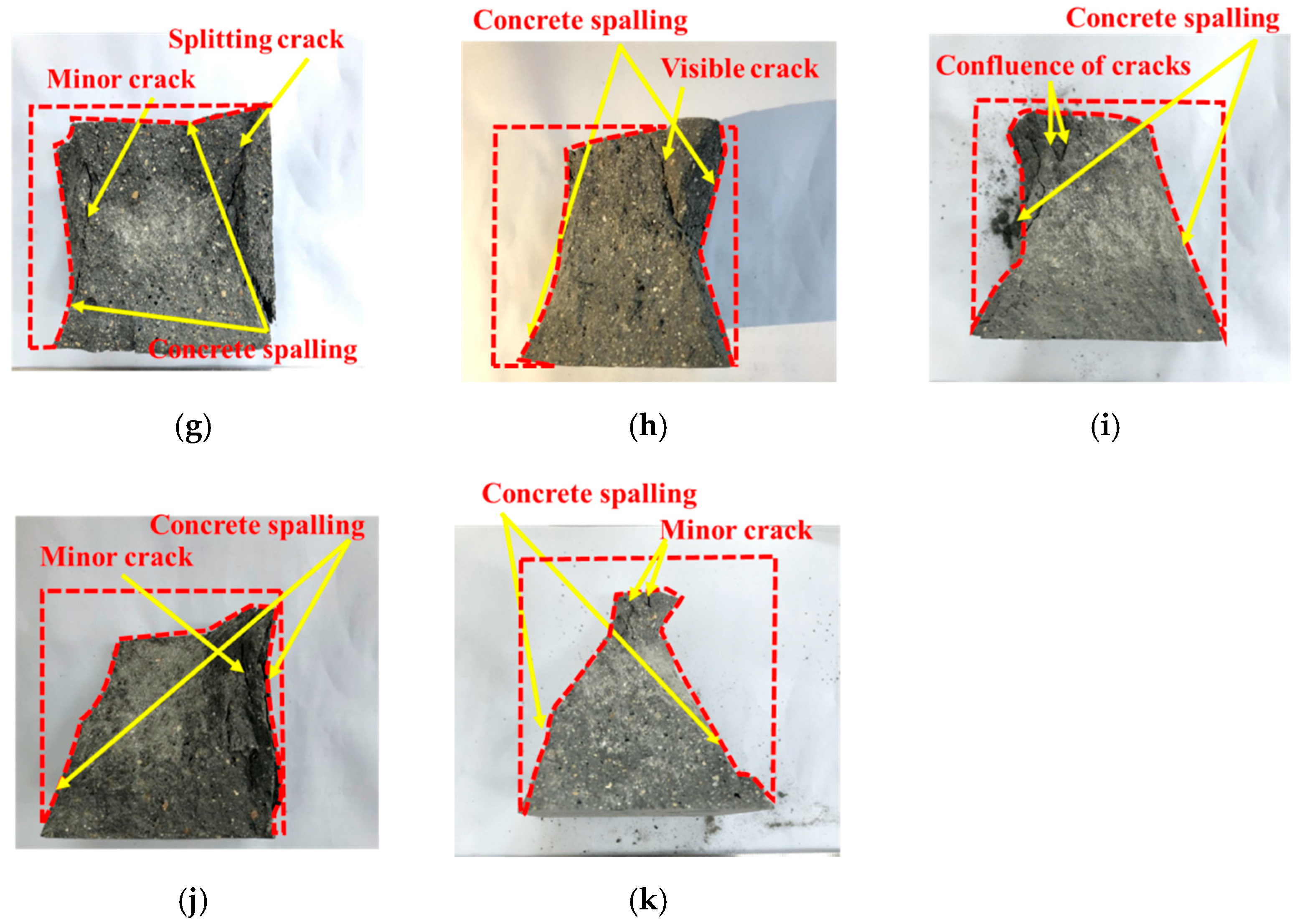


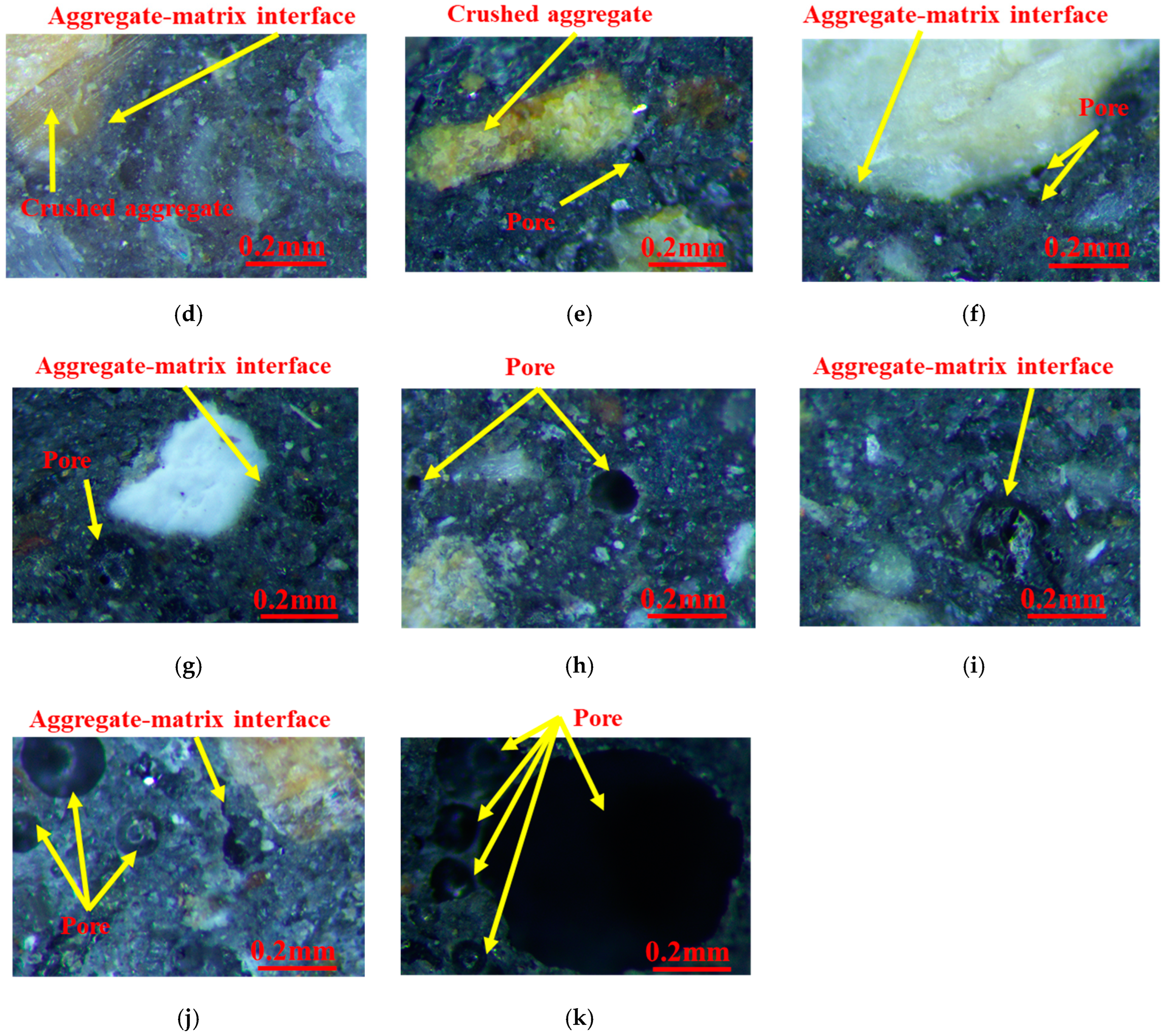

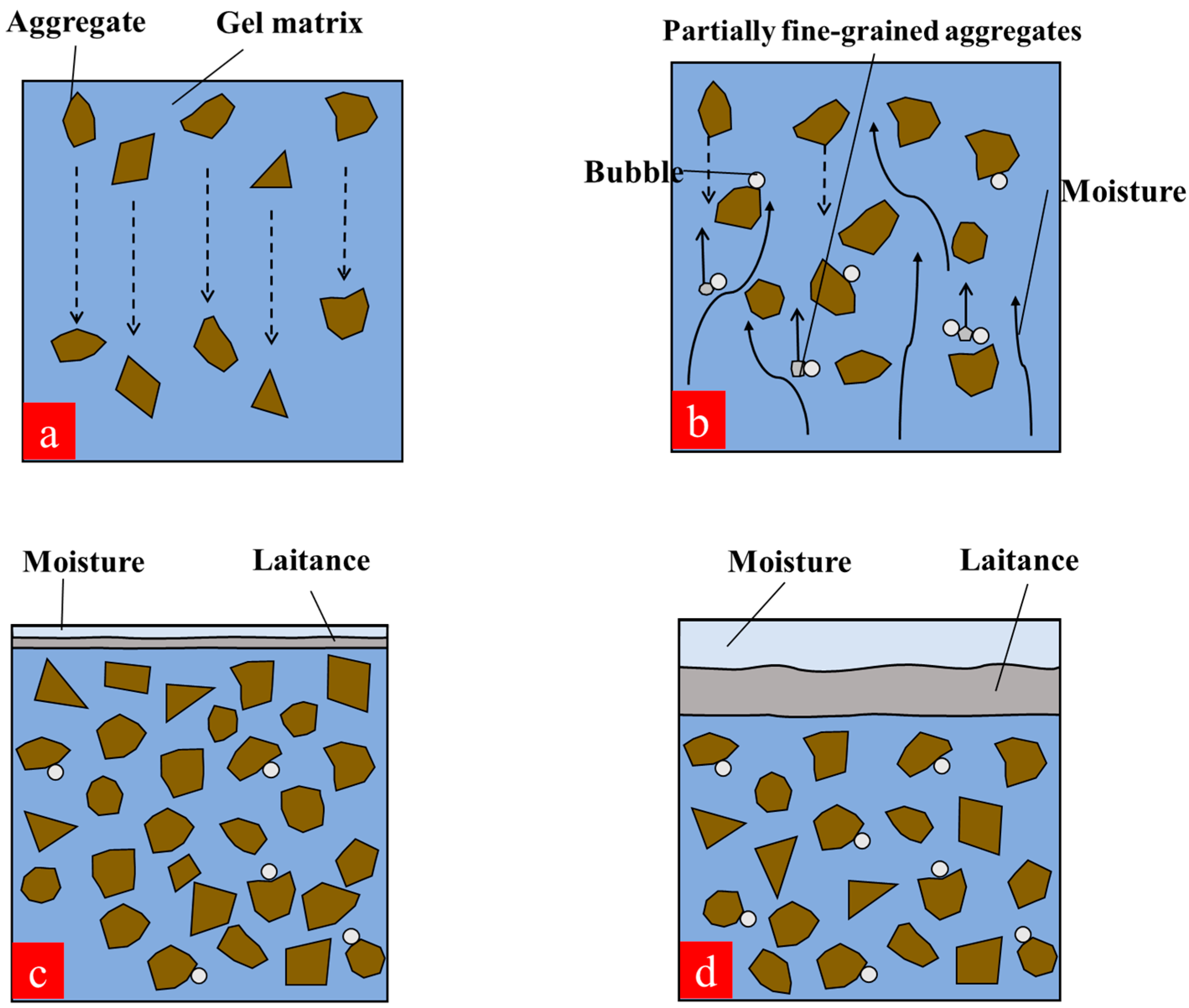



| Materials | SiO2 | CaO | Al2O3 | Fe2O3 | MgO | K2O | LoI |
|---|---|---|---|---|---|---|---|
| Cement/% | 24.66 | 55.46 | 7.09 | 2.71 | 2.15 | 0.65 | 7.28 |
| Silica fume/% | 92.8 | 0.31 | 0.76 | 0.52 | 0.53 | 2.2 | 2.88 |
| Bulk Density /(kg/m3) | Apparent Density /(kg/m3) | Fineness Modulus | Crush Value/% | Porosity /% | Water Absorption Rate /% | |
|---|---|---|---|---|---|---|
| Sand | 1572 | 2588 | 2.2 | 15.04 | 39.38 | 0.48 |
| GT | 1454 | 2779 | 1.1 | 28.59 | 47.84 | 1.77 |
| Mineral Composition | SiO2 | CaO | Al2O3 | Fe2O3 | MgO | K2O | LoI | |
|---|---|---|---|---|---|---|---|---|
| Proportion/% | Sand | 69.84 | 8.27 | 7.39 | 2.95 | 2.15 | 1.44 | 7.96 |
| GT | 56.64 | 13.34 | 11.52 | 7.25 | 3.72 | 3.54 | 3.99 | |
| Particle Size (mm) | 2.50~1.25 | 1.25~0.63 | 0.63~0.315 | 0.315~0.150 | 0.150~0 |
|---|---|---|---|---|---|
| Sand | 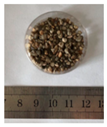 |  | 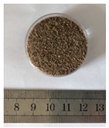 |  | 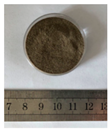 |
| Proportion/% | 13.62 | 24.56 | 39.96 | 16.93 | 4.93 |
| GT | -- | 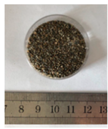 |  | 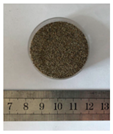 |  |
| Proportion/% | -- | 2.19 | 28.23 | 28.27 | 41.32 |
| Particle Size (mm) | 2.5~1.25 | 1.25~0.63 | 0.6~0.315 | 0.315~0.15 | 0.15~0 |
|---|---|---|---|---|---|
| Sand |  |  |  | 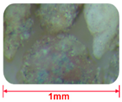 |  |
| GT | —— | 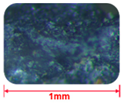 |  |  | 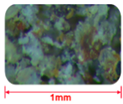 |
| Group | Water | Cement | Silica Fume | Sand | GT | Admixture |
|---|---|---|---|---|---|---|
| GT00 | 201.03 | 804.12 | 201.03 | 1206.18 | 0 | 17.09 |
| GT10 | 1085.56 | 120.44 | 17.09 | |||
| GT20 | 964.94 | 241.24 | 17.09 | |||
| GT30 | 844.33 | 361.85 | 17.09 | |||
| GT40 | 723.71 | 482.47 | 17.09 | |||
| GT50 | 603.9 | 603.9 | 17.09 | |||
| GT60 | 482.47 | 723.71 | 17.09 | |||
| GT70 | 361.85 | 844.33 | 17.09 | |||
| GT80 | 241.24 | 964.94 | 17.09 | |||
| GT90 | 120.44 | 1085.56 | 17.09 | |||
| GT100 | 0 | 1206.18 | 17.09 |
| GT00 | GT10 | GT20 | GT30 | GT40 | GT50 | GT60 | GT70 | GT80 | GT90 | GT100 | |
|---|---|---|---|---|---|---|---|---|---|---|---|
| Spalling Degree (%) | 26.8 | 19.6 | 16.8 | 11.3 | 7.9 | 15.4 | 17.2 | 35.5 | 32.7 | 51.1 | 54.3 |
Publisher’s Note: MDPI stays neutral with regard to jurisdictional claims in published maps and institutional affiliations. |
© 2022 by the authors. Licensee MDPI, Basel, Switzerland. This article is an open access article distributed under the terms and conditions of the Creative Commons Attribution (CC BY) license (https://creativecommons.org/licenses/by/4.0/).
Share and Cite
Duan, H.; Liu, H.; Li, B.; Wang, Z.; Gao, H. Mechanical Properties and Mechanism Analysis of Graphite Tailings Environment-Friendly Concrete. Materials 2022, 15, 8870. https://doi.org/10.3390/ma15248870
Duan H, Liu H, Li B, Wang Z, Gao H. Mechanical Properties and Mechanism Analysis of Graphite Tailings Environment-Friendly Concrete. Materials. 2022; 15(24):8870. https://doi.org/10.3390/ma15248870
Chicago/Turabian StyleDuan, Hourui, Hongbo Liu, Bochen Li, Zhongrui Wang, and Hongshuai Gao. 2022. "Mechanical Properties and Mechanism Analysis of Graphite Tailings Environment-Friendly Concrete" Materials 15, no. 24: 8870. https://doi.org/10.3390/ma15248870
APA StyleDuan, H., Liu, H., Li, B., Wang, Z., & Gao, H. (2022). Mechanical Properties and Mechanism Analysis of Graphite Tailings Environment-Friendly Concrete. Materials, 15(24), 8870. https://doi.org/10.3390/ma15248870





